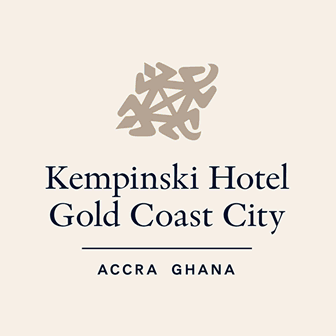
Ghana and six other countries have pioneered trading activities under the African Continental Free Trade Area (AfCFTA).
The official trading under the free trade area began on October 7, 2022, after nearly 22 months of preparatory works including putting institutional structures at the secretariat in Accra, Ghana.
The first such trans-border trading was a shipment by Kasapreko Company Limited and Ghandour Cosmetics Limited on January 1, 2021.
The six other countries involved in the trading are; Cameroon, Kenya, Egypt, Mauritius, Rwanda and Tanzania. Products traded included ceramics, palm oil, car batteries and coffee.
It put into motion a huge ambition to create the largest free trade area in the world measured by the number of countries participating.
The pact connects 1.3 billion people across 55 countries with a combined gross domestic product (GDP) valued at US$3.4 trillion.
According to the World Bank, the initiative has the potential to lift 30 million people out of extreme poverty, but achieving its full potential would depend on putting in place significant policy reforms and trade facilitation measures.
Creating a continent-wide market would require a determined effort to reduce all trade costs. African governments will also need to design policies to increase the readiness of their workforces to take advantage of new opportunities.
Institutional framework
To take advantage of the initiative, the Government of Ghana (GoG) has put in place an institutional framework to help maximise gains from the AfCFTA.
It includes the establishment of the AfCFTA inter-ministerial committee, national steering committee, and technical working groups on all the seven clusters for boosting intra-Africa trade.
Additionally, it has also designed the AfCFTA Policy framework and action plan as well as the National Export Development Strategy (NEDS) meant to help revitalise the country’s export development efforts with a strong focus on Africa’s over 1.2 billion consumer market.
The action plan seeks to provide the needed guidelines for mainstreaming the implementation of the agreement through value-addition to exports, developing capacity to effectively compete with imports and expansion of opportunities for job creation.
These are indications that the government had established the key national institutional structures to oversee the implementation of the AfCFTA initiative locally.
They will help Ghanaian businesses to fully participate and explore opportunities under the agreement.
Certifications of origin
Towards that, the government had assisted 30 Ghanaian firms to secure certifications of origin that will enable them to start trading under the single market initiative.
The certified firms were assisted through the (Ghana) National AfCFTA Coordination Office, which serves as the liaison between Ghana and the AfCFTA Secretariat.
The firms are part of the 230 potential exporters identified to be guided through AfCFTA processes, procedures and protocols as they develop their products to be exported.
A certificate of origin is a document which attests that a product listed has met certain criteria to be considered as originating in a particular country.
It is issued by the Customs Division of the Ghana Revenue Authority and the Ghana National Chamber of Commerce and Industry (GNCCI).
Ongoing trade
The National Coordinator at the (Ghana) National AfCFTA Coordination Office, Dr Fareed Kwasi Arthur, said two out of the 30 firms had been exporting under AfCFTA since October this year.
The two — Benso Oil Palm Plantation Limited and KEDA Ghana Ceramics Company Limited — exported palm oil products to Kenya and ceramics to Cameroon, respectively.
He said the coordination office assisted the companies to meet the necessary protocol for the shipment of their consignments.
Purposeful policy intermediation
It is obvious that the opportunities offered would not manifest by itself. It would require purposeful policy intermediation and active participation by all stakeholders.
As host country for the AfCFTA secretariat, Ghana is uniquely positioned to become the commercial capital of Africa should momentum that had been built is advanced.
The country must therefore be determined to make the most of the agreement by leveraging on the trade and investment opportunities that the AfCFTA presents.
Programmes such as 10-point industrial transformation agenda, SME development initiative, strategic anchor industries, one district, one factory (1D1F) initiative and establishment of industrial parks across the country could help facilitate the transformation of the economy and enable Ghana to optimise its benefits from AfCFTA when well structured.
Way forward
All regulatory agencies and trade institutions under the trade value chain such as the Ghana Export Promotion Authority (GEPA), Ghana Standards Authority (GSA), Ghana Shipper’ Authority (GSA) and Association of Ghana Industries (AGI) have a great responsibility in preparing the country to maximise gains from the agreement.
In the words of the immediate past Minister of Trade and Industry, Alan Kyerematen, “For Ghana to benefit from the initiative, there is an urgent need to create awareness among regulatory authorities, including the Customs Division of the Ghana Revenue Authority (GRA), economic operators, producers and exporters, as well as the logistical sector”.
The country needs a collective approach to inject a renewed and fresh hope into trade and industrialisation as these two key areas were necessary preconditions for strong recovery.
With advanced infrastructure connectivity, the AfCFTA initiative had great economic, trade as well as social advantages for Africa and its countries such as Ghana.
Keynote
The World Bank is projecting that the African Continental Free Trade Area (AfCFTA) agreement will create the largest free trade area in the world measured by the number of countries participating.
The pact connects about 1.2 billion people across 55 countries with a combined gross domestic product (GDP) valued at US$3.4 trillion.
It has the potential to lift 100 million out of poverty, 30 million people from extreme poverty, and 70 million people from moderate poverty but achieving its full potential will depend on putting in place significant policy reforms and trade facilitation measures.
Source: graphic.com.gh











